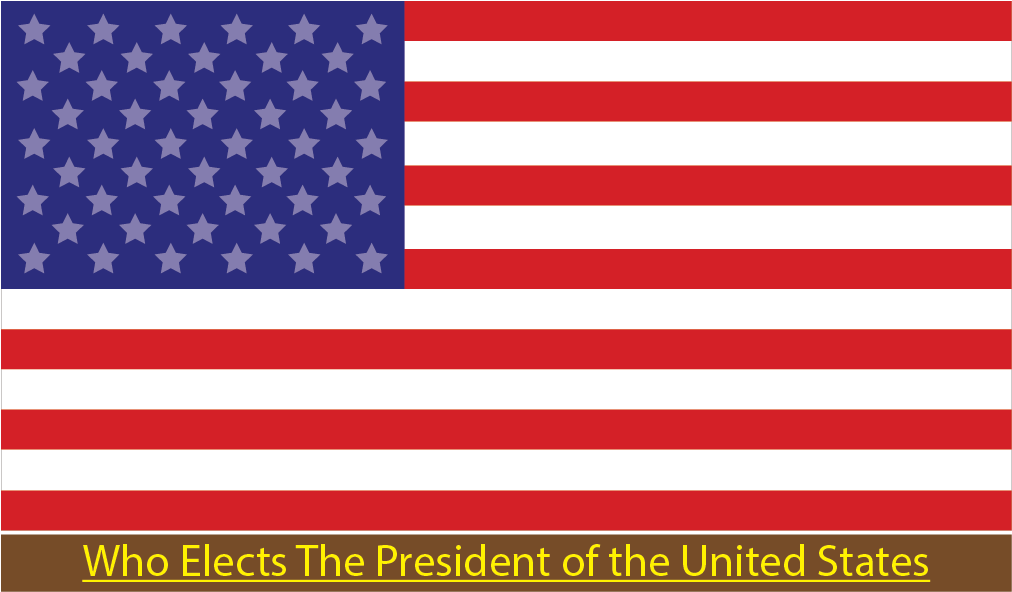Introduction
The United States of America is the fourth largest country in the world in terms of size and the third largest populated country. It has the most diverse population since historically the United States has been a country of immigrants.
Being the largest economy in the world, with a powerful military, and nuclear weapons, the United States of America is considered a superpower. Consequently, the President of the United States is the most powerful person in the world.
So, it will be interesting to study and understand, how the President of the United States is elected.
The president of the United States has a four-year term. The election for the president takes place every four years on the first Tuesday after the first Monday in November. The next presidential election in the United States of America will be on November 5, 2024.
The complete process of electing a president in the United States takes nearly two years. This article discusses the steps that result in the election of the President of the United States.
In many documents, Americans use the name of the seasons viz. Spring, Summer, Fall, and Winter, instead of calendar months. So, it will help to know the four seasons and their months. Winter (December to February), Spring (March to May), Summer (June to August), and Fall (September to November) are the four seasons in the United States.
Overview of the presidential elections in the United States
In a few republics that follow the presidential system, the president is declared elected based on the national popular votes secured in the election. However, the president and vice-president of the United States are not directly elected by the national popular vote. Instead, the election of the president and vice-president of the United States is based on who receives an absolute majority of the electoral votes; the presidential candidate who gets a minimum of 270 out of 538 electoral votes is elected to the office. The electoral votes are cast by the electors, and electors are the members of the Electoral College.
Hence, the election of the president and vice president of the United States is indirect. The eligible citizens who have registered to vote cast their ballot in one of the 50 states or Washington DC, in favor of their choice of ticket (presidential & vice presidential candidate). However, the state uses the election results to allot the electoral votes.
The method of selecting the electors for the Electoral College is governed by the state legislature and not by the Federal Government. The Electoral College laws in 48 of the 50 states have established a ‘winner-take-all’ method in which a presidential candidate who wins a majority/plurality of votes wins all the allocated electoral votes of that state; this means their slate of electors is chosen to vote in the Electoral College. The two states, Maine and Nebraska assign their electors using a method called proportional system.
In a scenario where no candidate receives an absolute majority of electoral votes for president and vice president, the members of the House of Representatives and Senate vote and elect the president and vice president as guided in the Constitution of the United States.
In most general elections (about 91% of the elections held so far), the presidential candidate who wins the national popular vote has also won the majority Electoral College votes. There were exceptions. In five presidential general elections viz. 1824, 1876, 1888, 2000, and 2016, the winning candidate of the electoral votes lost the national popular vote.
Meaning of plurality vote
This phrase is used in North American English and is the same as the phrase ‘relative majority’ in British English. A plurality vote explains a situation when one candidate receives more votes than any other candidate but does not receive more than 50 percent of all the votes cast.
Assume there are 3 candidates X, Y, and Z in a poll and the total votes cast are 100. The votes received by X is 47, Y 32, and Z 21. In this situation candidate X is said to have received a plurality of votes, but not a majority.
The word ‘majority vote’ is used when a candidate receives more than 50 percent of the total votes cast.
The election process for the president of the United States
The complete process of electing a president in the United States takes nearly two years. The step-by-step process of electing a president in the United States is discussed in the following sections.
The image below briefly explains the Presidential election cycle in the United States.
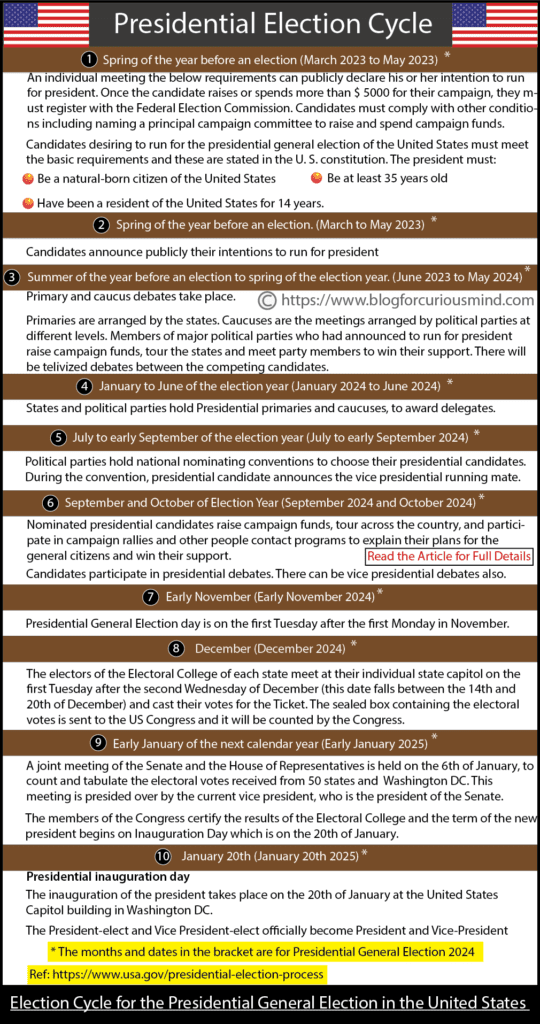
Candidates intending to run for president register with the Federal Election Commission in the spring of the year before an election
Candidates desiring to run for the president of the United States must meet the basic requirements stated in the U. S. Constitution. The president must:
- Be a citizen of the United States by birth (natural-born citizen)
- Be at least 35 years old
- Have been a resident of the United States for 14 years.
An individual meeting the above requirements can declare his or her candidacy to run for president. Once the candidate raises or spends more than $ 5000 for their campaign, they must register with the Federal Election Commission. The candidates must comply with other conditions including naming a principal campaign committee to raise and spend campaign funds.
This process normally happens during the spring of the year before an election, however there is no end date. The aspiring candidates of major political parties publicly announce their intention to run for president.
The eligibility criteria for a vice-presidential candidate are the same as for a presidential candidate.
The Constitution of the United States sets a term limit for presidents. A person cannot be elected as president for more than two terms.
Please visit https://www.usa.gov/requirements-for-presidential-candidates and https://www.fec.gov/help-candidates-and-committees/registering-candidate/ to know more.
Primary and caucus debates take place from the summer of the year before an election to the spring of the election year.
Primaries are the elections held by the state to help the political parties to choose their presidential nominees. The states do this for both Republican and Democratic parties, as per the state laws.
Caucuses are meetings organized by political parties and are held at the county, district, or precinct level.
The members of the political parties (Republican, Democratic, and others) who have announced their intention to run for president, raise funds, name their campaign committees, and tour different states to campaign for their candidacy. They participate in the party meetings, meet party members, and try to win support for their nomination.
There will be televised debates between the candidates competing for the presidential nomination of their party. This process happens for the contestants in both Republican and Democratic parties.
States and political parties hold Presidential primaries and caucuses from January to June of the election year.
The two ways the people can help the states and political parties to choose presidential nominees is through primaries and caucuses.
Presidential Primaries
Most of the states hold their primaries 6 to 9 months before the presidential election and the primary voters choose their preferred candidate anonymously by voting in secret ballots. These states will consider the results of the voting to award delegates to the winners.
Caucuses
Other states hold caucuses much before the National Convention of the party; caucuses are meetings organized by political parties at the county, district, or precinct level. These caucuses may follow different methods to decide the number of delegates given to each contesting candidate.
In the end, the number of delegates awarded to each candidate is based on the caucus votes received by them.
Types of primaries and caucuses
Based on the individual state and the rules framed by the political party, the primaries and caucuses can be open, close, or a mix of the two.
- In an open primary or caucus, the voter does not need to be registered with the political party to take part in its primary or caucus.
- In a closed primary or caucus, only voters registered with the political party can participate in voting and other activities.
- There can be ‘semi-open’ or ‘semi-close’ primaries and caucuses.
The primary elections are arranged by state and local governments and the caucuses are managed by the political parties themselves. Some states have only primary elections, some have only caucuses, and the remaining have a combination of both. Traditionally the states of Iowa and New Hampshire are known to hold the first presidential state caucus and primary respectively.
The number of delegates given to each candidate in a state primary or caucus is based on a set of complex rules. The rules are framed by the political parties and may differ from state to state and party to party.
The selected delegates of the political parties attend their respective party’s National Nominating Conventions.
Please visit https://www.usa.gov/primaries-caucuses for more information on Presidential Primaries and Caucuses.
National nominating conventions of political parties
Major political parties hold national nominating conventions between July to early September of the election year to select their presidential and vice-presidential nominees.
A candidate must win the majority of delegates to become the presidential nominee of the political party and this generally happens through the party’s state primaries and caucuses.
The state delegates attend the national convention to vote to endorse the candidate of their choice. If no candidate secures the majority of their party’s delegates during the primaries and caucuses held earlier, the convention delegates choose the nominee by voting.
At the convention, the presidential nominee officially declares who will run with him/her for vice president. The president and vice-president nominees of a political party are together called a ‘ticket.’
The delegates for the National Convention can be of two types:
- Pledged or bound delegates must vote and support the candidate to whom it was awarded through the primary or caucus process at the state level.
- Unpledged delegates, also called super delegates, can vote and support any presidential candidate of their choice.
In rare cases, the nominee is selected through one or two rounds of voting by the convention delegates. Such conventions are termed as ‘contested’ & ‘brokered’ conventions. Each party has its terms and conditions for the pledged and unpledged delegates to participate in the first and second rounds of voting.
Please visit ‘https://www.usa.gov/national-conventions’ for more information on National Conventions.
Campaigning for the general election
September and October of the election year are the campaigning time!
Once the political parties choose their presidential nominees through primaries, caucuses, and National conventions, the presidential nominees raise campaign funds, tour across the country, and participate in campaign rallies and other people contacts to explain their plans for the general citizens and win their support.
The presidential and vice-presidential nominees may run campaigns together and individually. There will be advertisements in electronic media, the internet, and print media.
There will be televised presidential debates between the presidential nominees of major political parties (Republican and democratic parties). There may be debates between vice-presidential nominees also.

Presidential general election in early November
Presidential general elections, also called general elections happen every four years on the Tuesday after the first Monday in November. The citizens of the United States who have registered to vote vote for president and vice president. This date may coincide with other federal and local level elections. Since managing the elections in the United States is the responsibility of the local governments, the ballot paper in the state may include other races also on the ballot.
Major political parties in the United States nominate their presidential and vice-presidential candidates at the party’s national convention. The names of all the candidates will be listed on the general election ballot.
Independent candidates and candidates belonging to minor political parties may not hold a national convention. But candidates meeting the eligibility criteria may appear on the ballot on a state-by-state basis.
Casting the vote in the presidential general election
- Registered voters can vote even if they did not vote in their state’s primary elections.
- Voters can vote for any presidential candidate, irrespective of the political party they are registered with or their previous voting history.
Most voters prefer to vote on Election Day. Depending on the state you live in, the voters may have the option to exercise their voting by mail-in ballots, early voting, etc.
Visit https://www.usa.gov/presidential-general-election to know more about the Presidential general election.
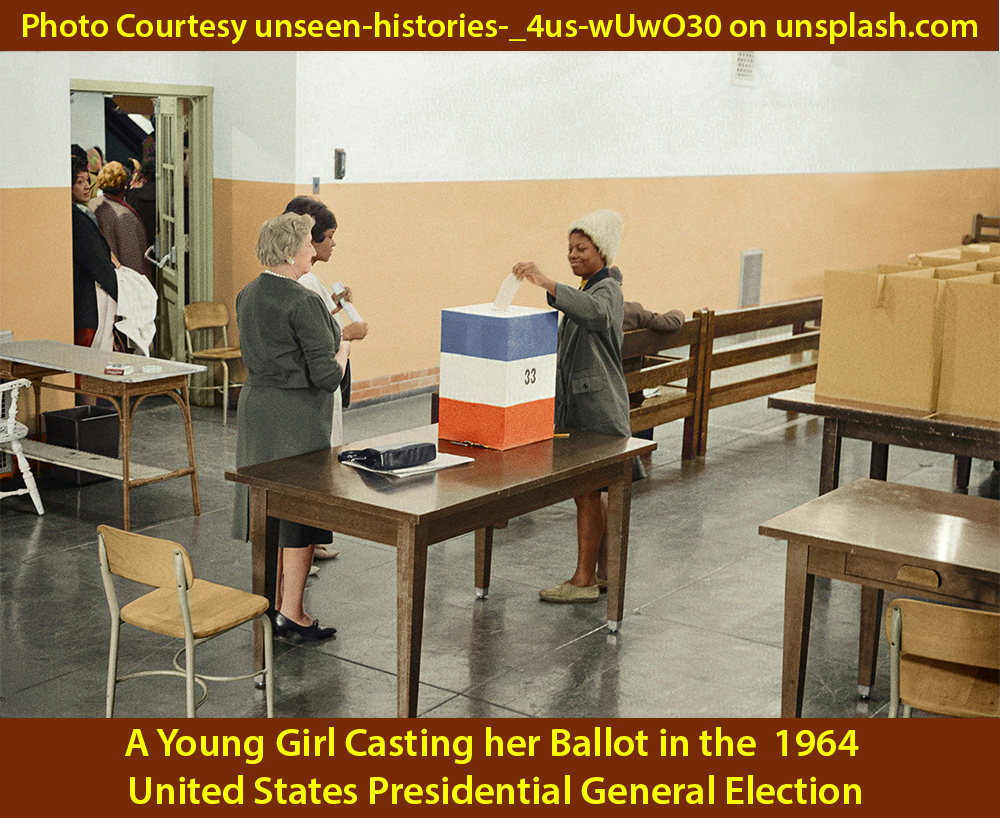
Who can register to vote in the presidential general election?
The citizens of the United States who are 18 years or older are eligible to register to vote in an election (United States Federal, state, and local elections). However, beyond the basic qualification of age, the responsibility to regulate voter eligibility lies with the state legislatures. Accordingly, the exact requirements for voter eligibility and registration may differ from state to state; in some states, a convicted felon is not eligible to vote.
In nearly every state, a citizen less than 18 years old can register to vote if he/she will be 18 by the election day.
Please visit https://www.usa.gov/who-can-vote for more details and eligibility criteria.
Electors of the state Electoral College cast their votes during December of the election year.
The electors of the Electoral College of each state meet at their individual state capitol on the first Tuesday after the second Wednesday of December (this date falls between the 14th and 20th of December) and cast their votes for their choice of ticket (Presidential and Vice Presidential candidates). The sealed box containing the electoral votes is sent to the US Congress and it will be counted by the Congress.
Please read the chapter on ‘Electoral College’ to understand how it works.
Note: The Electoral College has a total of 538 electors; however, they never meet at the national level. The voting of the Electoral College always happens at the state level.
The Congress counts the electoral votes.
A joint meeting of the Senate and the House of Representatives is held on the 6th of January, to count and tabulate the electoral votes received from 50 states and the federal district of Washington DC. This meeting is presided over by the current vice president, who is the president of the Senate.
The members of the Congress certify the results of the Electoral College and the term of the new president begins on Inauguration Day which is on the 20th of January.
Presidential inauguration day
The inauguration of the president takes place on the 20th of January at the United States Capitol building in Washington DC. Traditionally it is the vice-president-elect who takes the oath of office first followed by the President-elect. They officially become President and Vice-President after reciting the oath of office. The next presidential inauguration is scheduled to be on January 20, 2025.
Visit https://www.usa.gov/inauguration#:~:text=When%20is%20Inauguration%20Day%3F,be%20on%20January%2020%2C%202025. For more details.
You may watch this, this, and this (in Hindi) YouTube videos on how the United States elects its president.
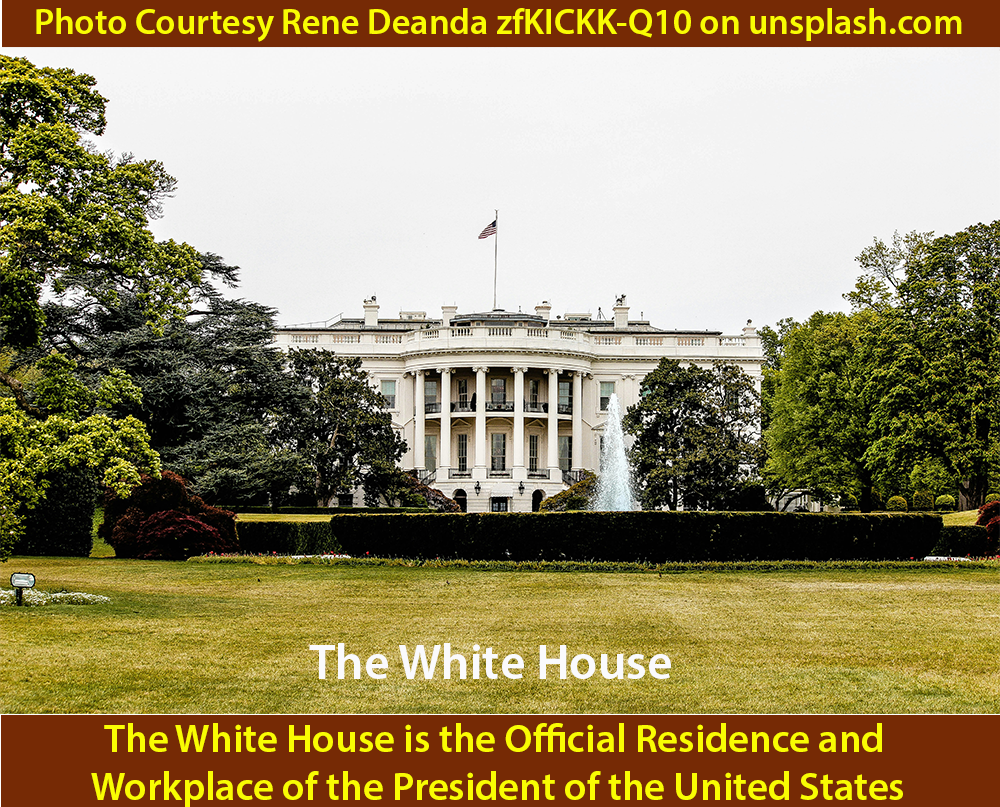
Electoral College
In the United States presidential general election, the Electoral College decides who will be elected as president-elect and vice president-elect.
What is the Electoral College?
The Electoral College is not a physical college or place; it is a group of electors whose only purpose is to vote for the president and vice president. An Electoral College is formed every 4 years as per the guidelines of the United States Constitution.
The Electoral College is a process that includes
- The selection of electors
- The meeting of electors where they cast votes for the president and vice president
- The counting of the electors’ votes by the Congress.
In other elections of the United States, senators and representatives of the House are elected by popular vote. However, the president and vice-president are not directly elected by citizens, instead, they are elected through the Electoral College Process.
The process of using the Electoral College is as per the constitution of the United States. This was a compromise between the popular vote of the citizens and a vote in the congress.
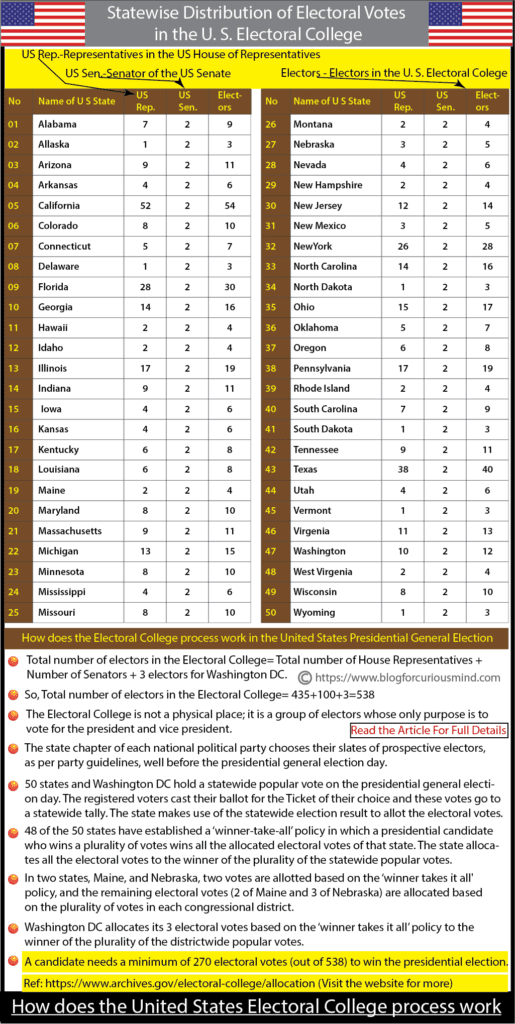
Total number of electors (electoral votes) in the Electoral College
Each state gets electors (electoral votes) equal to the total number of its members in Congress (House and Senate). The constitutional amendment of 1961 granted three electoral votes to Washington DC (the federal District of Columbia). The present grand total of electors in the United States Electoral College is 538 including three electors of Washington DC.
Total number of electors in the Electoral College= Total number of House Representatives + Number of Senators + 3 electors for Washington DC.
So, Total number of electors in the Electoral College= 435+100+3=538
California (54), Texas (40), Florida (30), New York (28), Illinois (19), and Pennsylvania (19) are the six states with most electors and together they have 190 electoral votes (35% of 538). Washington DC and six least populated states viz. Alaska, Delaware, North Dakota, South Dakota, Vermont, and Wyoming have the least number of electors, three each.
Who can be appointed as an elector in the Electoral College
Senators, Representatives in the House of Representatives, and persons holding an Office of Trust or Profit under the United States are not eligible to be appointed as electors. There can be more terms and conditions on the appointment of electors and they are set by state laws.
Who selects the electors of the state Electoral College?
As per the constitution of the United States, the legislature of each state decides the process of choosing its electors (the state’s Electoral College delegation). The states normally choose the electors by popular vote.
Each state verifies and issues Certificates of Ascertainment confirming the names of its appointed electors.
The selection of the electors of the Electoral College happens in two parts.
Part-I
The state chapter of each national political party chooses their slates of prospective potential electors well before the presidential general election day. This process is controlled by the individual political parties both at the national and state level. The method of nominating the slate of electors can differ from party to party and from state to state.
Normally, the political parties nominate their potential electors at their state-level convention or pick them by a vote during party primaries. Political parties may choose individuals to their slate of electors by giving due recognition to their dedication, commitment, and service to the party. By this method, each ticket (presidential and vice presidential candidates) has a unique slate of electors.
Part-II
When the registered voters vote for their choice of ticket (President and vice president candidates) on the election day, they are voting indirectly to select a ‘slate of electors’ associated with the ticket. The ballot of some states may display the name of the concerned elector also. So, the voters who voted in the presidential general election select the electors of their respective state’s Electoral College.
In 48 of the 50 states, the state laws regarding the Electoral College have established a ‘winner-take-all’ policy in which a presidential candidate who wins a plurality of votes wins all the allocated electoral votes of that state. The state allocates all the electoral votes of the state to the winner of the plurality of the statewide popular votes. This means their slate of electors is chosen to vote in the Electoral College.
In two states, Maine, and Nebraska, two votes are allotted based on the ‘winner takes it all’ policy, and the remaining electoral votes (2 of Maine and 3 of Nebraska) are allocated based on the plurality of votes in each congressional district
Washington DC, the federal district of Columbia, allocates its 3 electoral votes based on the ‘winner takes it all’ policy to the winner of the plurality of the districtwide popular votes.
How does the Electoral College process work
The 50 states and Washington DC hold a statewide (districtwide for Washington DC) popular vote on the presidential general election day, on the first Tuesday after the first Monday in November. The registered voters of each state cast their ballot for president and vice president (Ticket) indicating their choice and these votes go to a statewide tally. Even though the registered voters vote for their choice of ticket, the state makes use of the statewide election result to allot the electoral votes.
In 48 states, the state laws regarding the Electoral College have established a ‘winner-take-all’ policy in which a presidential candidate who wins a plurality of votes wins all the allocated electoral votes of that state. The state allocates all the electoral votes of the state to the winner of the plurality of the statewide popular votes. This means their slate of electors is chosen to vote in the Electoral College.
In two states, Maine and Nebraska, two votes are allotted based on the ‘winner takes it all’ policy and the remaining electoral votes (2 of Maine and 3 of Nebraska) are allocated based on the plurality of votes in each congressional district.
Washington DC, the federal district of Columbia, allocates its 3 electoral votes based on the ‘winner takes it all’ policy to the winner of the plurality of the districtwide popular votes.
A candidate needs a minimum of 270 electoral votes (out of 538) to win the presidential election.
Normally, a projected winner of the presidential general election (based on the state-wise tally of popular votes) is announced on election night in November. But the vote of the Electoral College takes place in mid-December when the electors hold a meeting in their states.
The electors of the Electoral College of each state meet at their individual state capitol on the first Tuesday after the second Wednesday of December (this date falls between the 14th and 20th of December) and cast their votes for the president and vice president. The sealed box containing the electoral votes is sent to the US Congress and it will be counted by the Congress.
Most states have laws to ensure the electors cast their electoral votes faithfully. Every state normally demands the electors to pledge to vote for the winning ticket of that state. Many states have framed laws to prevent the incidences of ‘faithless electors’ and to enforce the pledge taken by the electors. In rare cases of unfaithful electors, the respective state may take necessary penal actions against the elector.
Different scenarios of the Electoral College
A candidate may win the Electoral College, but lose the popular vote.
This happened in 2000, 2016, and three times in the 1800s (1824, 1876, and 1888).
2000 Presidential General Election
Republican Ticket (George W Bush & Dick Cheney) received 50,456,002 votes (47.9%) and 271 electoral votes (out of 538). Republican Ticket won the presidency.
Democratic Ticket (Al Gore & Joe Lieberman) received 50,999,897 votes (48.4%) and 266 electoral votes (out of 538).
2016 Presidential General Election
Republican Ticket (Donald Trump & Mike Pence) received 62,984,828 votes (46.1%) and 304 electoral votes (out of 538). Republican Ticket won the presidency.
Democratic Ticket (Hillary Clinton & Tim Kaine) received 65,853,514 votes (48.2%) and 227 electoral votes (out of 538).
When no candidate receives the majority electoral votes, the vote goes to the House of Representatives and it is done as guided by the constitution of the United States.
If no presidential candidate receives a simple majority of 270 electoral votes, the House converts the meeting into an election session, and a contingent election takes place; one vote is cast by each of the fifty states. A presidential candidate must get a minimum of 26 votes to become the president-elect. There is no vote for Washington DC (the federal District of Columbia).
The senate members have the responsibility of electing the vice president and each senator has one vote. The candidates elected as president-elect and vice president-elect are inaugurated on the 20th of January.
Visit https://www.usa.gov/electoral-college to know more about Electoral College.
You may watch this YouTube video on the United States Electoral College.
Strategy for campaign
In the United States, there are states whose residents predominantly vote for the Democratic Party (called blue states) and states whose residents predominantly vote for the Republican Party (called red states); hence the two parties are almost confident to win the electoral college votes of their respective states of influence. The remaining states are called swing states, battleground states, or purple states where neither party or neither candidate has an overwhelming support base. The presidential candidates spend much of their campaigning time, effort, and funds in these states to influence and win over the voters.
Traditionally, the swing states are Arizona, Georgia, Michigan, Nevada, North Carolina, Pennsylvania, and Wisconsin. Since it is the number of electoral votes secured by a candidate that decides winning or losing the election, candidates spend more campaigning energy and funds towards winning more swing states rather than winning the national popular vote.
Each political party divides the eligible voters into three groups. The eligible voters can belong to one of the three groups viz. voters who are undecided, the party’s voter base, and the voters of the opponent. The campaign strategy of each political party revolves primarily around how to keep their support base intact, and how to swing the undecided voters towards the party. They may have a strategy to pull some of those voters who are committed supporters of the opponent. The final objective and goal are to create a path of victory for the candidate. Political parties make use of the data from previous elections and data from their own survey as a base to form their strategies.
Parties use the Internet, television, and other media for electronic campaigning and advertising.
Frequently Asked Questions (FAQ)
The president of the USA is elected for how many terms?
The Constitution of the United States sets a term limit for presidents. A person cannot be elected as president for more than two terms. One term means four years.
Who elects the president of the United States?
The president and vice-president of the United States are not directly elected by the national popular vote. Instead, the election of the president and vice-president of the United States is based on who receives an absolute majority of the electoral votes; the presidential candidate who receives a minimum of 270 out of 538 electoral votes is elected to the office. The electoral votes are cast by the electors or members of the Electoral College.
The voters cast their ballot for president and vice president indicating their choice and these votes go to a statewide tally. In 48 states and Washington DC, the winning presidential candidate of a state gets all the electoral votes of that state. The two states, Maine and Nebraska assign their electors using a method called proportional system.
What are swing states in the United States presidential general election?
Swing states, also called purple states or battleground states are the states that do not lean heavily towards the Republican or Democratic Party. These states can ‘swing’ towards the presidential candidate of the Democratic or Republican party based on the issues and the candidates. Since the electoral votes of the swing states become a decisive factor in making a candidate president-elect, both political parties spend a large portion of their campaign time, funds, and energy on winning the swing states.
The main characteristics of a swing state are whichever party wins a swing state, wins by a small margin of votes and different political parties win over time. Based on the outcome of the 2016 and 2020 presidential general elections the following states may be named as some of the swing states Arizona, Georgia, Michigan, Pennsylvania, Wisconsin, North Carolina, and Nevada.
Conclusion
The election of the president of the United States is quite interesting, is it not? It is interesting to know that the political parties do not nominate or enforce their presidential candidates directly; the aspiring presidential candidates of the political parties go through a process of primaries and caucuses to win the delegates and the candidate winning the maximum delegates is nominated as the political party’s presidential candidate.
Except in rare cases of disputes, controversies, and situations created by unfaithful electors of the Electoral College, the final process of presidential election in December and January is a mere formality. The winner of the general election can be determined unofficially based on state-by-state results of the popular vote.
You may like to read the article ‘Who Elects the Prime Minister of India‘.
References
https://www.usa.gov/presidential-election-process
https://en.wikipedia.org/wiki/United_States_presidential_election
https://en.wikipedia.org/wiki/United_States_Electoral_College
https://www.archives.gov/electoral-college/electors#selection
https://usafacts.org/articles/what-are-the-current-swing-states-and-how-have-they-changed-over-time
https://www.archives.gov/electoral-college/allocation (List showing the state-wise electors in Electoral College)

